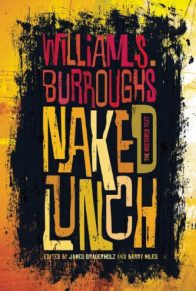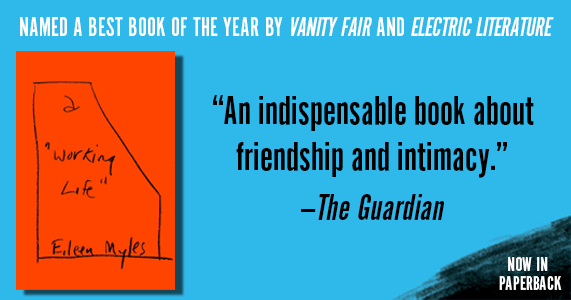Though I’ve smoked it on and off since 1976, I only really started thinking about marijuana seriously when, researching that magazine story, I ended up in a store called the Little Grow Shop in Vancouver. The shop sold hydroponic and other indoor growing supplies, and marijuana seeds over the counter, from the basement of a larger store called Hemp B.C., an upscale head shop selling bongs, books, rolling papers, pipes, hemp jeans, and tie-dyed T-shirts on West Hastings Street. Downstairs in the Little Grow Shop I had the strange feeling of being in some urban mutation of the rural farm supply outlets I’d known as a kid–comfortable places where farmers stood around and swapped talk about the crops. Even the manner of speaking was the same–a clipped, minimalist farmer shorthand. The five staff members had varying experiences growing marijuana outdoors in swampy lowlands, dry prairie, hillsides and valleys; some had grown indoors, in soil or hydroponically, using chemical fertilizers or going totally organic. I learned a lot about growing pot just by eavesdropping at the counter:
“We can’t guarantee which are females. It’s normal to get two or three males in ten seeds.”
“You’re giving them way too much nitrogen.”
‘sativas grow taller than indicas as a rule.”
“You need a light, an exhaust fan, a reservoir to hold your water, soil, pots, nutrients, a good fertilizer, and good seed. For about a five-hundred-dollar start-up you can grow four ounces of pot every two months.”
“Absolutely everybody grows it differently, which tells you it’s real easy to grow.”
Surrounded by super-enlarged photo posters of richly resinous buds from strains like B.C. Kush, White Rhino, and Pearly Girl, the store’s staff dispensed advice, while the owner, Marc Emery, held court from his desk in the back corner of the open room. He wore his hair in a dated, parted-down-the-middle cut that showed too much of a spacious forehead, and had a habit of squinting as if he were trying to keep his glasses from slithering down his nose, yet somehow Emery managed to exude a kind of charisma. Likely you remember someone from high school who was smarter than the teachers and took pleasure in letting them know it. Emery would be the forty-year-old version of that bratty kid.
He toked from a huge fattie consisting of a variety called Shiva Skunk, then lit up a personal favorite, a cross of two varieties, Northern Lights and Blueberry, but smoking huge quantities of reefer didn’t seem to mellow him at all, as pot does most people. He kept up a caustic, funny patter–he doesn’t so much talk as crow–and since he was the boss, no matter how obnoxious or abrasive his opinions became, no one could tell him to shut up.
“American farm boy types come in here often,” he told me, “and they’ll stand there at the book rack, taking in the room over the top of a magazine for the longest time. Then suddenly a big smile comes over their face, and they’ll burst out, “Ah cain’t bu-leeve what ahm seein” here!””
His desk was a clunky old wooden schoolteacher’s model with three cubic feet of drawers that contained the most intense concentration of marijuana genetics in North America. There were about three hundred little black film canisters in Emery’s desk, each holding seeds of a unique marijuana strain, some back-bred to stability, others a first-generation hybrid. Many of these strains were local varieties that have given Canada’s west coast a reputation for some of the world’s best pot.
He wore a headset to take a constant stream of phone calls, and he was filling some of the $20,000 worth of mail orders he received each and every week, inlaying seeds in cardboard flats that he slid into envelopes bound most often for California and Australia. “Our Commonwealth brothers in Oz are really into pot,” he said. “They’re at the same stage of marijuana acceptance as Canada.”
3
Listening to the staff chat to customers, I felt humbled, and a little intimidated, to be so thoroughly enlightened: growing pot can be approached with all the dedication and attention to horticultural science that any serious farmer gives his acreage, or any prize-winning gardener her rose bed. Beyond that, the fruits of these labors, the harvested flowers, can be damned or praised with the epicurean subtlety, the gourmandise, that the French or Italians bring to wine and food. Producing and imbibing the best marijuana can be elevated to an art form.
3
Researching the story gave me an excuse to keep hanging out at the Little Grow Shop. I really did enjoy the no-pretense General Store ambience of the place, plus there was the promise, or I should say the guarantee, of getting totally baked. By chance I met Jorge Cervantes, American author of Indoor Marijuana Horticulture and other outstanding grow books. “This is like a farmer’s co-op,” Jorge said as he took in the scene, “where you can meet growers and ask them what works for them. Europe is still much more advanced than here, but I think Vancouver’s following in the same footsteps as Holland.”
Jorge had come north for a research tour. “As an author, I cannot and will not go to a grow room in the United States,” he said. “I could go to jail for the rest of my life. If a grower gets arrested and they have evidence of me being there, then I’m an accomplice and I’m equally guilty under the RICO statute.” The Racketeering Influenced and Corrupt Organizations Act is a federal law from 1970 intended to fight organized crime, on the theory that planning to commit a crime, or even having knowledge of a crime, is the same as committing the crime, and should carry the same punishment. “I’ve been all over the world, and the U.S. is one of those Gestapo countries when it comes to marijuana laws,” Jorge said. “Here in Canada I can visit people who are growing, do it carefully and quietly, and not have any troubles. And it’s nice here.”
Many Americans think of Vancouver as part of the Pacific Northwest, but for Canadians it’s the extreme southwest. In winter it’s as warm as you can get and still be in Canada. It’s like Seattle, only rainier, if you can imagine that. Vancouver’s a great town. One point eight million people, and you can still say, as a friend did lately from a sidewalk chair outside a pleasant cafe, “Let’s get out of this cultural contrivance and into the beauty of nature.” Nature, in the form of clean beaches, or spectacular temperate rain forest, is twenty minutes away. That makes Vancouver my pick as best city in the world to smoke a doob and go for a walk.
Jorge drove me east to the Vancouver suburb Coquitlam to visit the home of Mike, one of the five growers who at that time made up the Spice of Life seed company. We sat with him in the living room for a while, watching the local hockey team, the Canucks, take on Carolina on the tube.
The house was a labyrinth of white-walled grow rooms, some no bigger than a closet. Jorge happily snapped pictures of me sniffing bud, pictures that Mike was careful to stay out of. Things are cool in Canada, but not that cool. Jorge said, “I can’t believe the attitude in Spain right now. When I take pictures there, the growers want to be in them.”
Mike wished he could be that free. “As far as I’m concerned I’m not doing anything wrong at all,” he said. “It’s a crime that pot’s illegal. It is. How dare they come in here and bust my ass, get the fuck out right now, that’s how I feel about it. Turn around and don’t break any lightbulbs on the way out.”
Jorge said, “You’d make it about a week in the U.S. with that attitude. You’d be kissing the floor with your hands behind your back, a big boot right on your neck” –he made a choking sound–”and every time you’d squeak they’d stomp you a little bit more.”
The plant names were labeled on white plastic knives stuck in the soil: Shishkaberry, Sweet Skunk, Purple Hempstar. The Shishkaberry, like the currently popular Bubbleberry, is a hybrid developed from a strain called Blueberry. Blueberry comes out of various crossings and recrossings of three strains: Highland Thai, also called Juicy Fruit when it was first bred in the 1970s in the American Pacific Northwest; Purple Thai, which was itself a cross between Chocolate Thai and Highland Oaxaca Gold; and a nameless Afghani indica.
This knowledge may sound as though it were difficult to acquire, but truth be told, a ton of information is out there for anyone, for free, on the Internet. This is how Blueberry was described in Marc Emery’s Summer 2000 catalogue: “80% Indica, 20% Sativa. Dates to the late 1970’s. Large producer under optimum conditions. A dense and stout plant with red, purple and blue hues, usually cures to a lavender blue. The finished product has a very fruity aroma and tastes of blueberry. Notable euphoric high of the highest quality, and very long lasting. Medium to large calyxes. Stores well. Height 0.7 to 1 meter. Flowering 45–55 days.”
3
The genus cannabis belongs to the cannabaceae family, which has only one other member, hops. Indica and sativa are the two major species of the cannabis genus (a third, Ruderalis, native to Russia, is seldom bred for marijuana, although I’ve seen people attempt it indoors in Canada and outdoors in California).
Cannabis sativa originally grew (and still does grow) naturally nearer the equator than indicas. Sativas tend to be tall, from two to six meters, with long thin leaves and loose flowers. They smell fruity. The high is usually described as cerebral and uplifting.
Cannabis indica is associated with the Hindu Kush region, the cooler, mountainous, more northerly terrain of Afghanistan and Pakistan. It’s a smaller plant, one or two meters high, with short, fat leaves and tight, heavily resinous flowers. Almost all commercial strains of cannabis have some indica bred into them, because slow-growing long-limbed pure sativas aren’t profitable. Indicas tend to smell more skunky than sweet. The high is a heavier “body” stone.
Smoke a sativa and go for a swim, and you’re likely to feel yourself to be a water sprite, splashing on the diamond surface. Smoke an indica, and you’ll feel yourself a shark, with an urge to hold long breaths and descend to the murky depths.
Most marijuana varieties have a lineage as complex as Blueberry, but not all of them are as well-documented. The venerable weed is, after all, illegal, and breeding in most places is a clandestine, secretive, risky business. And even if pot were legal, many growers would want to keep trade secrets from their competitors.
Mike pointed to an oddly spindly plant and said, “This one is really interesting, it’s called Parsley Bud. It’s going through a bit of stress right now, but all the leaves grow that way.” Rather than spreading out in the familiar seven-leaf pattern, the crinkly leaves clung in tight bunches. “I’m crossing it with a purple strain to get the color into it, then I’m going to back-cross back, to try and keep some purple color with this leaf structure. It does not look like a pot plant.”
“It looks like it should have berries,” I said.
“The cops could fly over and look for what they’re used to looking for, and not see that one. Great, eh?”
Mike had a new strain called Romulan he wanted us to taste. He was planning on entering it in an upcoming Cannabis Cup in Amsterdam. The Cannabis Cup is a huge smokefest hosted annually by New York–based High Times magazine, America’s leading monthly devoted to marijuana since 1974.
“We should hire someone to dress like a Star Trek character and hand out free samples,” he said. “It’s like any world-class flower show: you’ve gotta impress the judges.”
Excerpted from Pot Planet: Adventures in Global Marijuana Culture
” Copyright 2002 by Brian Preston. Reprinted with permission from Grove Atlantic, Inc. All rights reserved.















